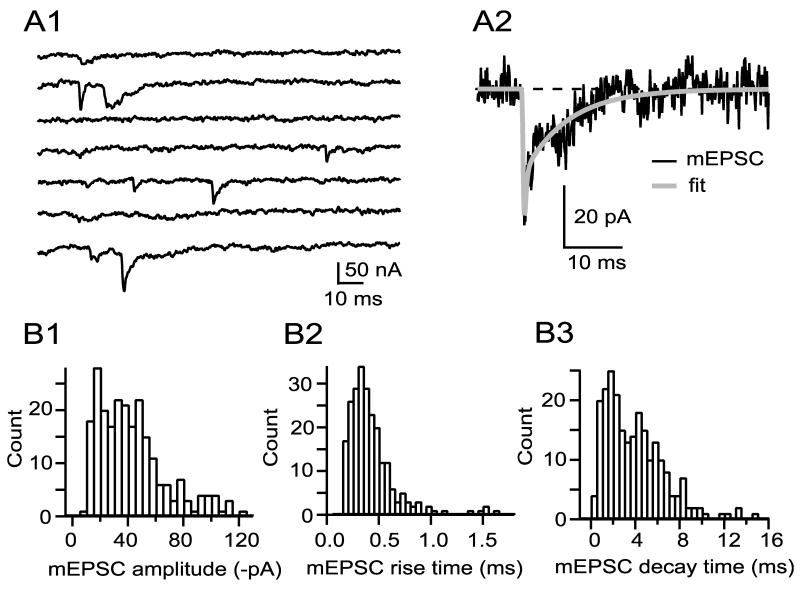Figure 3.
MEPSCs are heterogeneous in amplitude, rise time, and decay time. A1 illustrates a sample of mEPSCs obtained during the second 100 ms of 7 sequential responses after evoking EPSCs in 0.5 mM Ca2+, 2.5 mM Mg2+, and 2.0 mM Sr2+, by which time the baseline had returned to zero. MEPSCs are fitted (A2), and the probability density functions of the fits displayed in B1 (amplitude), B2 (rise time) and B3 (decay time). The fastest rise time values (calculated on fits, see A2) were in the range of 0.10-0.15 ms, which corresponds to 2-3 data points at 20 kHz sampling (across 14 cells, 97% of rise times were greater than 0.15ms). The fastest decay times across 14 cells were 0.35 ± 0.09 ms; thus, decay times in the fastest bin (B3, 0-0.5 ms) are in the range of 0.35-0.5 ms).

